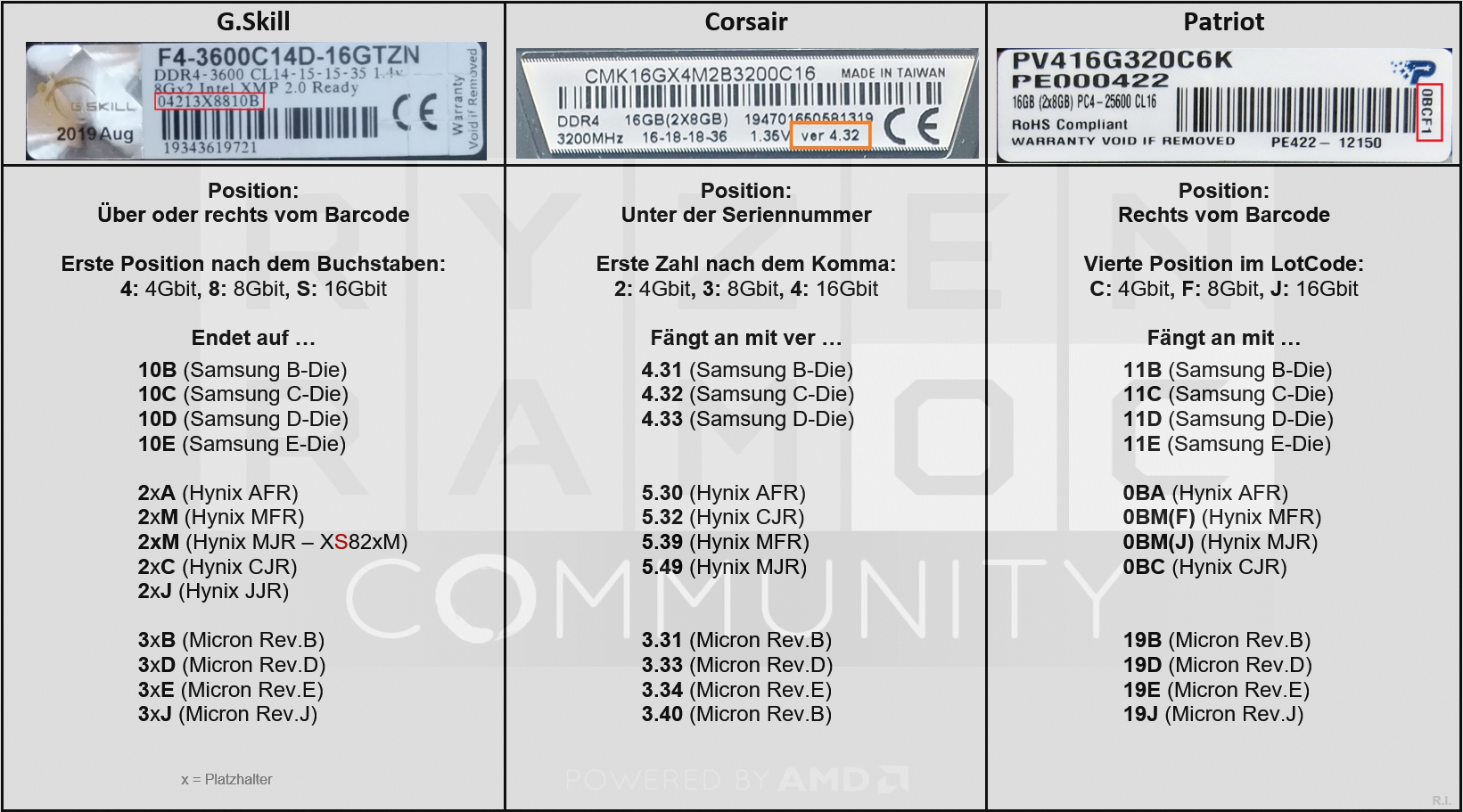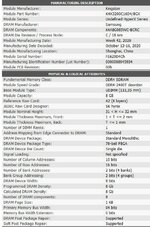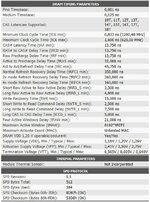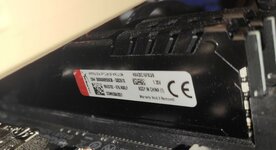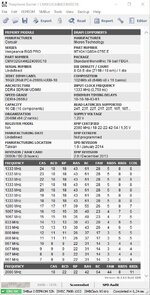Hey guys - I think this Thread is perfect for my question because the Patriot Viper could be C-Die
My system:
- Ryzen 3100
- Asus TUF B550m Gaming Plus
This system is working with Patriot Viper Steel 16GB 3600 CL18 (XMP) but I recognized I need more RAM for better Video editing.
So I purchased a 64GB Kit - same brand- same timings - not working
I tried everything - DRAM Calc. etc. switched to a gigabyte b550m
The 64GB Kit isn't working with 1,35V - most stable on 3600 is 1,29 Volt (Gigabyte MB showed 1,35V on 1,31V setting O__O )
But it isn't "stable" at all...
So I did some tests and the question is: Which Kit to choose?
I bought Ryzen 3100 and 16GB because I just wanted a new platform (from old i7 920) and to update it later.
Should I keep 64GB and switch later to a new CPU (In the hope its getting better)
OR should I keep 16GB and change CPU and RAM later.
These are the measures in User_Bench
64GB @ 3200 CL16 - 20 - 20 - 38 - 61. 1,3V
- Multicore: 33,9GB/s
- SingleCore: 28,9GB/s
- latency: 83,8NS
64GB @ 3333 CL16 - 21 - 21 - 42 - 66 (Not optimized till the end). 1,3V
- 34,5 GB/s
- 29,8 GB/s
- 82,6 ms
16GB @ 3600 CL18 - 22 - 22 - 42 - 69 (XMP) - 1,35V
- 36,6 GB/s
- 30,1 GB/s
- 72,5ms
16GB @3600 CL16 - 22 - -22 - 42 - 69 (Just tried out - could be optimized)
- 37 GB/s
- 30,5 GB/s
- 72,8 ms
One of the problems is that there are only 4 Corsair 2x32GB RAM sticks in the compatibility list from Asus
So maybe its just stupid to drive 4x32GB later
My system:
- Ryzen 3100
- Asus TUF B550m Gaming Plus
This system is working with Patriot Viper Steel 16GB 3600 CL18 (XMP) but I recognized I need more RAM for better Video editing.
So I purchased a 64GB Kit - same brand- same timings - not working
I tried everything - DRAM Calc. etc. switched to a gigabyte b550m
The 64GB Kit isn't working with 1,35V - most stable on 3600 is 1,29 Volt (Gigabyte MB showed 1,35V on 1,31V setting O__O )
But it isn't "stable" at all...
So I did some tests and the question is: Which Kit to choose?
I bought Ryzen 3100 and 16GB because I just wanted a new platform (from old i7 920) and to update it later.
Should I keep 64GB and switch later to a new CPU (In the hope its getting better)
OR should I keep 16GB and change CPU and RAM later.
These are the measures in User_Bench
64GB @ 3200 CL16 - 20 - 20 - 38 - 61. 1,3V
- Multicore: 33,9GB/s
- SingleCore: 28,9GB/s
- latency: 83,8NS
64GB @ 3333 CL16 - 21 - 21 - 42 - 66 (Not optimized till the end). 1,3V
- 34,5 GB/s
- 29,8 GB/s
- 82,6 ms
16GB @ 3600 CL18 - 22 - 22 - 42 - 69 (XMP) - 1,35V
- 36,6 GB/s
- 30,1 GB/s
- 72,5ms
16GB @3600 CL16 - 22 - -22 - 42 - 69 (Just tried out - could be optimized)
- 37 GB/s
- 30,5 GB/s
- 72,8 ms
One of the problems is that there are only 4 Corsair 2x32GB RAM sticks in the compatibility list from Asus
So maybe its just stupid to drive 4x32GB later



